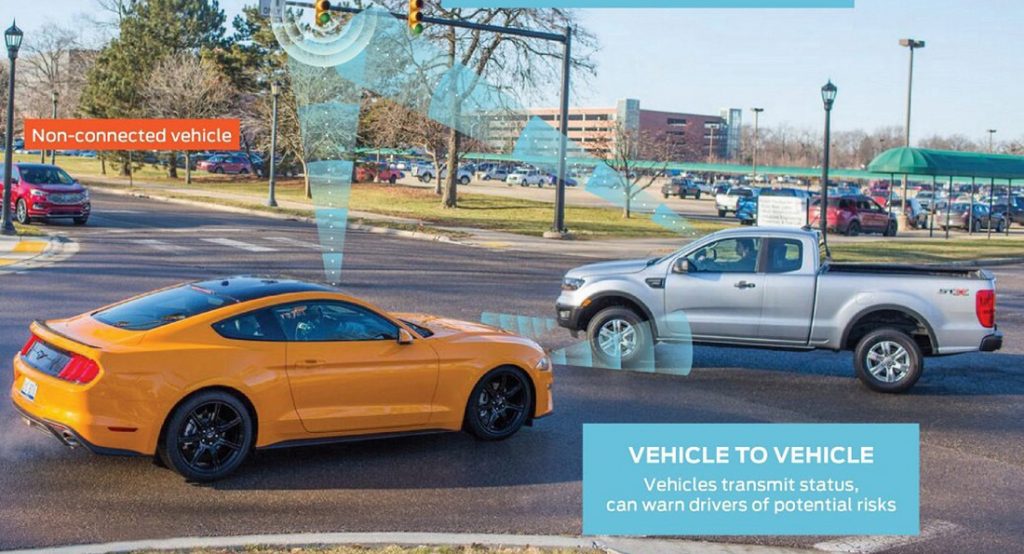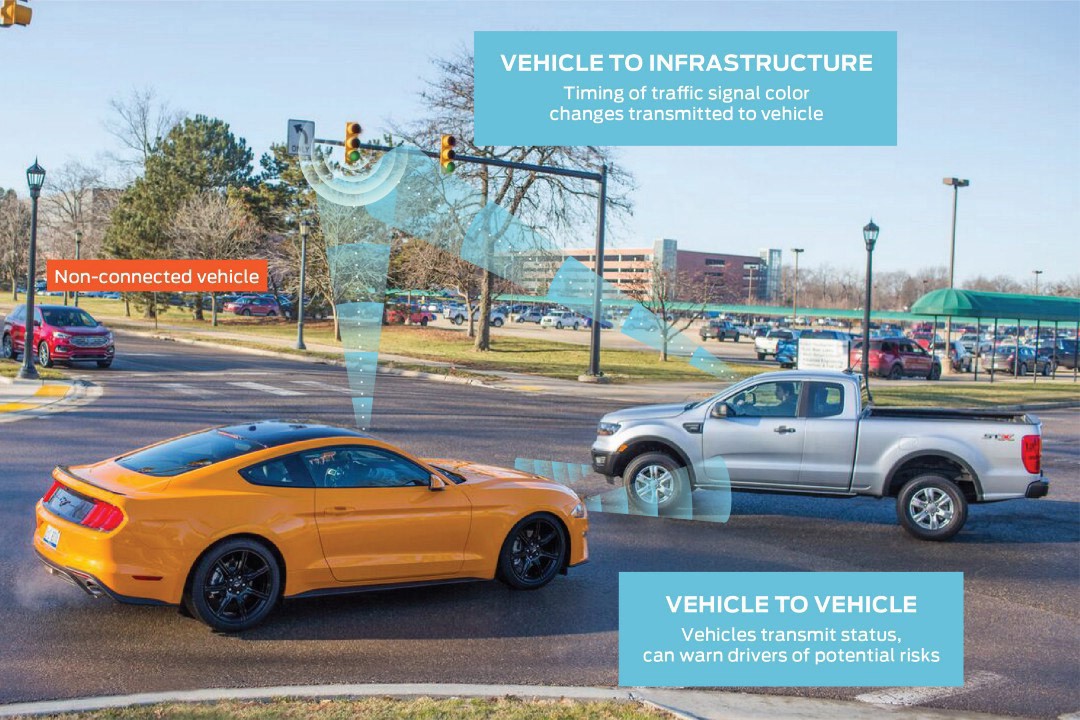A number of companies are working on vehicle-to-vehicle (V2V) and vehicle-to-infrastructure (V2I) technology, but Ford has announced some interesting new developments in regards to cellular vehicle-to-everything (C-V2X) technology.
While acknowledging that immediate and universal adoption of C-V2X is a “daunting challenge,” the company has used a meeting of the Intelligent Transportation Society of America to unveil a new device that allows vehicles to communicate with other road users such as pedestrians, cyclists and e-scooter riders.
Essentially a box that can be mounted at intersections, the device allows different wireless technologies to talk to one another. According to Ford, the roadside unit acts as an “interpreter” that can translate signals from different wireless technologies such as Bluetooth and C-V2X.
This doesn’t sound too exciting, but it means Bluetooth signals from smartphones and wearable device could tell cars where people are located. As an example, a pedestrian could cross a street while their smartphone alerts nearby drivers to stop until the path is clear.
The second technology introduced at the meeting is aimed at allowing autonomous vehicles to talk to their human-driven counterparts. As Ford explained, it’s easy for humans to communicate right of way, at a four-way stop, with a simple wave of the hand. However, autonomous vehicles can’t do this.
As a result, engineers are developing an “unalterable blockchain-based system” which determines which vehicle should go first. As you can see in the demonstration video, three vehicles arrive at an intersection at approximately the same time. The system determines the other two vehicles should go first, so the driver of the F-150 is shown a message telling them to wait.





